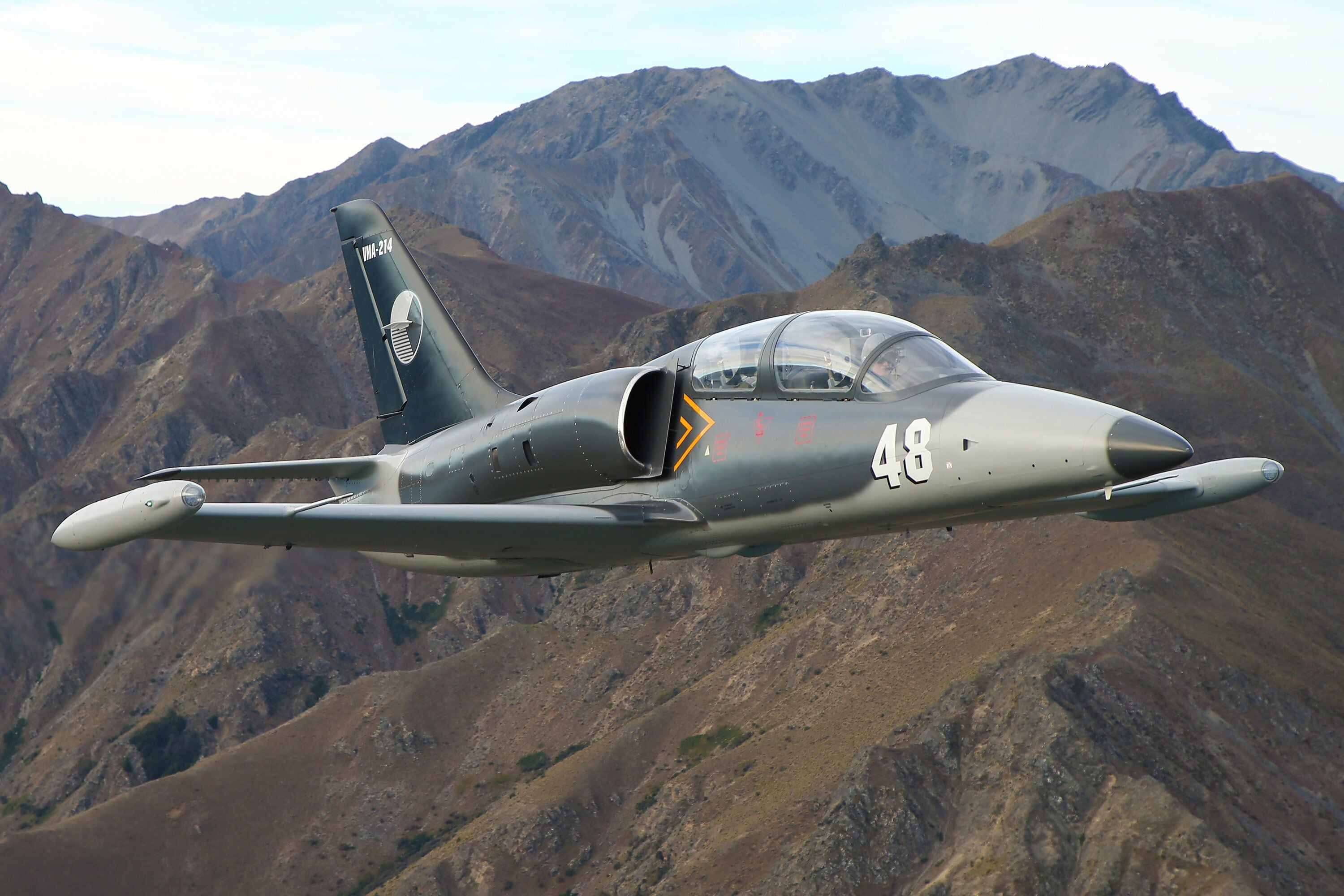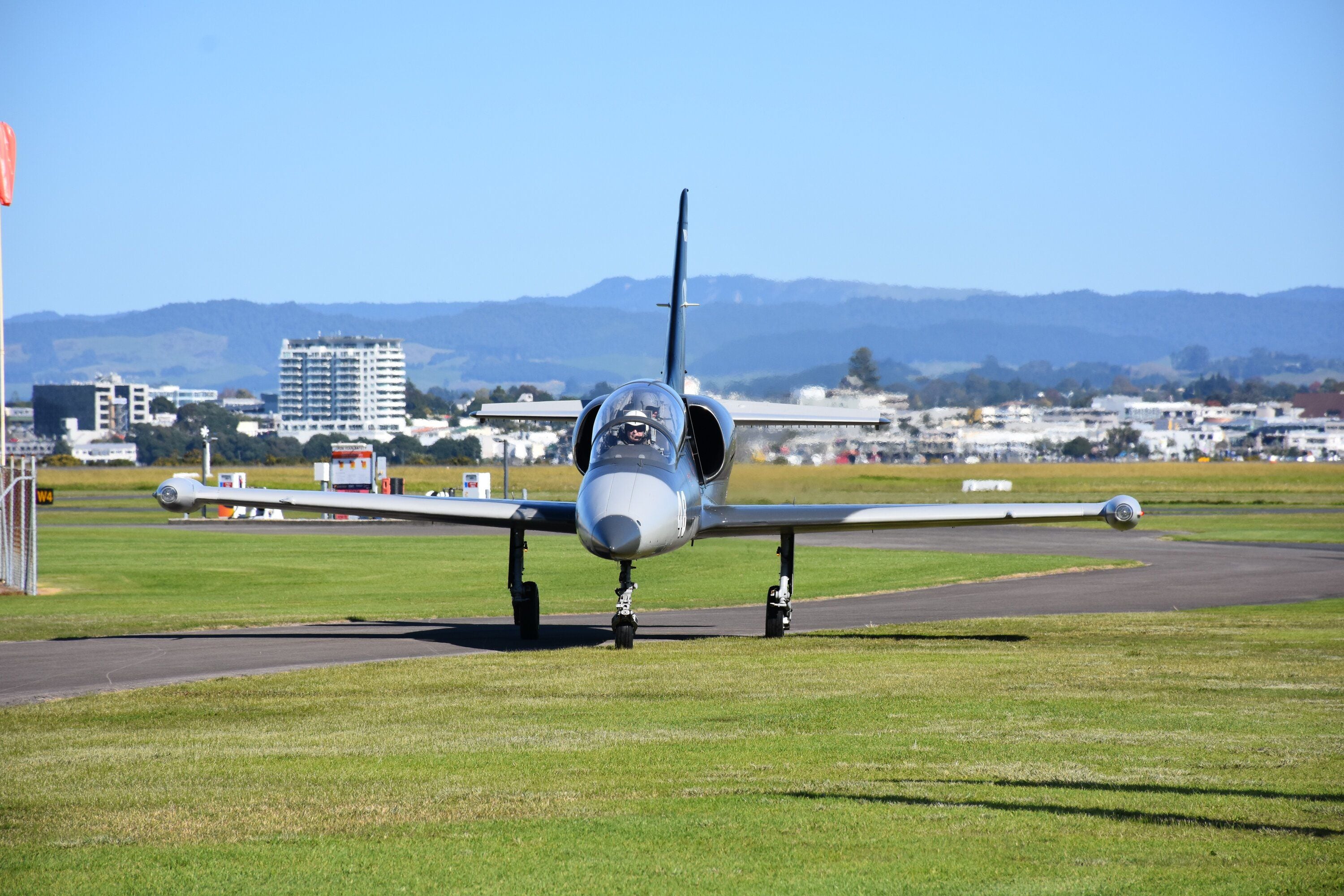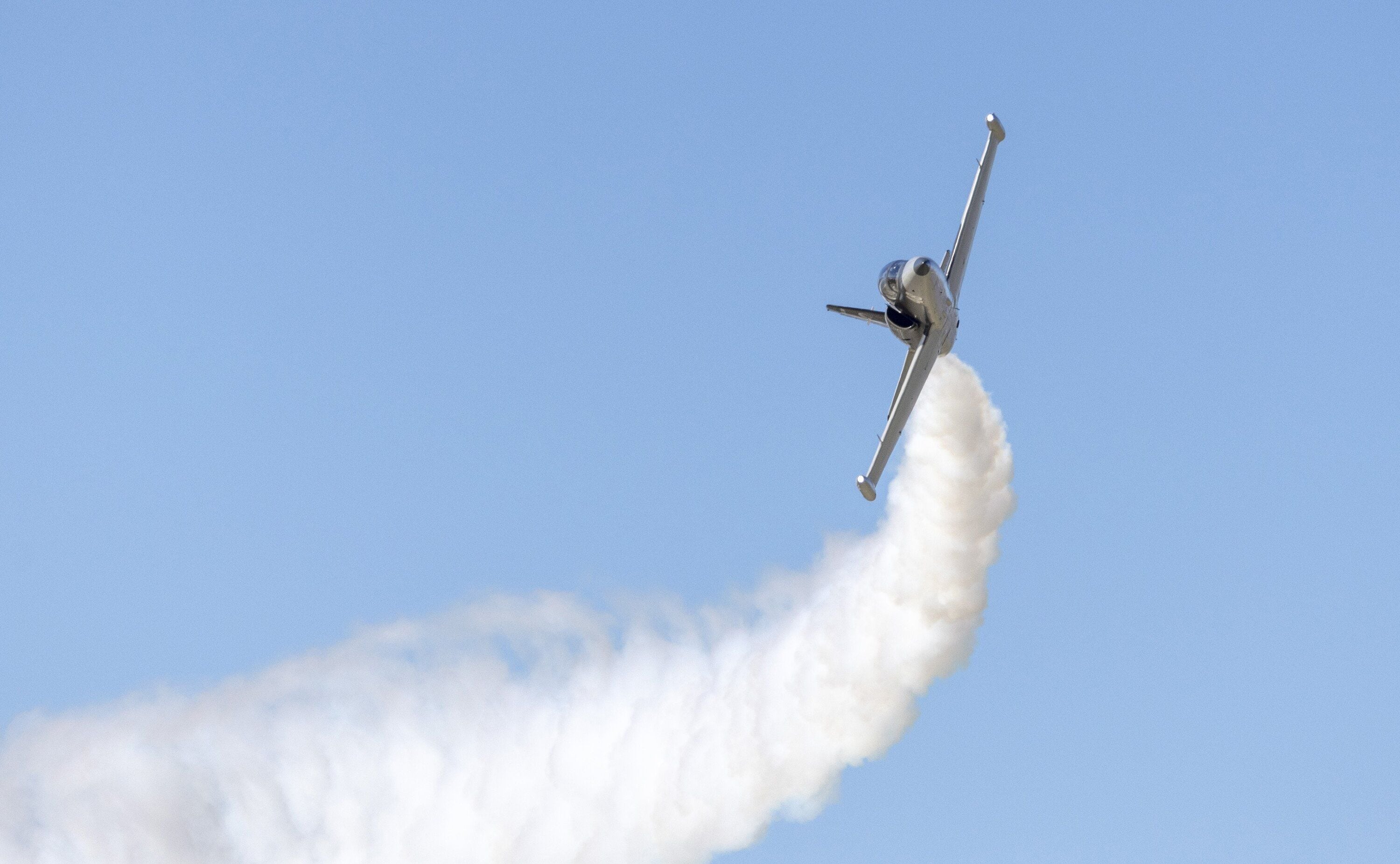A once-in-a-lifetime experience awaits fans of fast-moving aeroplanes and films such as Top Gun, said Fighter Jet CEO Craig Mossman.
He has three Aero L-39 Albatros jet fighter trainers in his hangar on Dakota Way, Tauranga, waiting to take passengers to the skies.
“The smell, the sensation, sitting under a bubble (cockpit), and just the sensation is just different,” Mossman said.
The first jet was purchased by Mossman 13 years ago, and Jet Fighter has been taking people on rides for six years.
“They were made in Czechoslovakia. So he said that these two are the Ukraine Air Force, and the third one is ex-Russian Air Force,” he said.
“They’re all identical. All three of them, but there are different colours.”

Albatross-48 one of the ex-Ukrainian Airforce trainer jets. Photo/ Fighter Jets NZ
In their heyday, Mossman said the jets were used as advanced trainers where frontline fighter pilots were trained before moving into the MiG29.
“These won’t go supersonic, but for what we do, it doesn’t matter.”
The group offers three different packages: Top Gun, a 30-minute thrill ride putting passengers through aerobatic twists and turns; Thermal Recon, a 30-minute flight that takes you to Rotorua in 10 minutes, flying around the volcanic activity in the region; Buzz, and Break a 20-minute taster that will drop down and do some low-level flying.
The prices range from $3888 for the Buzz and Break to $4299 for the Top Gun and Thermal Recon package.
Every passenger is taken through a PowerPoint presentation and safety briefing so they know what to do in case of emergency, Mossman said.

Albatros-48 gets ready for take-off at Tauranga Airport. Photo / Fighter Jets NZ
Passengers will witness a top speed of a touch under 500km/h and can accelerate to 700km/h when pulling manoeuvres, said Mossman.
“You don’t get that sensation of speed that you get in a Formula 1 car. It’s a lot faster, and we’re a little higher off the ground,” he said.
According to Mossman, unlike propeller aeroplanes, there isn’t a lot of “bite” off the start line, so there is no sensation of being thrown back into the seat.
“There’s a little kick as you head off, but it’s not like a drag car or something.”
The aerobatic manoeuvres start gently, with a few twists and turns to get the passenger used to the sensations of being in the cockpit, he said.
“The first one, we just pull a little bit of G-force and go vertical and climb vertically.”
“Then we go into quite a gentle, a barrel roll, with no G-force.”
G-force measures the acceleration felt as weight, commonly experienced during rapid changes in speed or direction.
Once the passenger is settled and comfortable with these manoeuvres’ effects on their bodies, the pilot can go to four-and-a-half sustained G-force if requested.
Because of the physical exertion and effects of G-force on the body, Mossman suggests having someone else who can drive after the flight.
“It is very draining, putting your body through all that pressure.”
To find out more, please visit FIGHTER JETS NZ – The Ultimate Adrenaline Rush



1 comment
Can you help them?
Posted on 18-10-2024 16:45 | By Watchdog
The Ukrainians just phoned, they would like to borrow the three albatrosses for a little while if that's OK?
Leave a Comment
You must be logged in to make a comment.